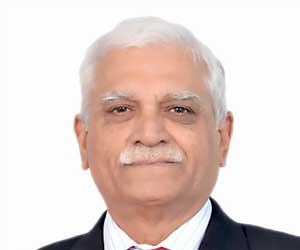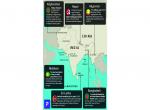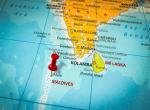In May 2020 the Indian media covered news of large scale Chinese intrusion in Ladakh1. This was followed by a series of articles by the mainstream media about how the current government had failed to safeguard the territorial integrity of the nation2. By the time the government started countering the flak, adverse public opinion was building up in India. Then on 15-16 June 2020 the Galwan incident took place at Patrolling Point 14. The initial response to this incident was that the Indian government had sacrificed the lives of brave soldiers by sheer negligence and inept response to the Chinese3. As the full details of the incident trickled down in the public domain it emerged that the People Liberation Army (PLA) was ‘red faced’ covering up the heavy casualties caused by the Indian troops at Galwan4.
Are these ‘occurrences in isolation’ or part of a bigger Chinese game plan? What lies at the core of these actions by China? What is the strategic approach China is likely to follow in pursuance of its core ideology and vision against India? A comprehensive answer to these three questions is that ‘China is carrying out a highly synergized and coordinated information war (IW) against India as part of her global ambitions. In this paper this aspect will be highlighted in three parts:
- Adoption of IW concepts by China.
- The Chinese core ideology in pursuing her strategic approach against India.
- Application of Chinese IW theories against India
- Suggested Indian response.
Adaption of IW Concepts by China
The Chinese watched both the Gulf Wars (1991 and 2003) and studied the theories of IW formulated by the Americans very carefully. Their concepts of IW are very much similar to what the Americans propagated through their military literature (which is freely available in the public domain) with the major differences in costs and applications. Thus the Chinese subscribe to the view that IW spectrum contains netwar, political and economic war at low end of violence whereas psychological operations, physical destruction, electronic warfare, military deception, operational security, information assurance and computer network attack are at high end of violence or in the domain of kinetic war. The latter components form part of the military domain of IW whereas former can be grouped in the non-military domain. However, both these domains have major overlaps5.
Coupled with the modern approach of IW the Chinese continue to believe in winning the war without fighting it- as part of the Confucian approach. Though Mao Zedong diluted the Confucian pacifism and adopted a more aggressive approach. Thus the Chinese adoption of IW concepts can be summarised as, ‘synergistic application of net war, political and economic war to subjugate the adversary to accept Chinese supremacy keeping the PLA as an ‘informationised’ force to be kept as a threat in being. For specific application against India the Chinese have Western Theatre Command (WTC) with Headquarters at Chengdu6.
The Chinese core ideology in pursuing her strategic approach against India
China as an ancient and highly developed civilization, believes that the Chinese emperors/rulers have divine sanction to rule the universe (All under the Heaven). This middle kingdom approach makes the Chinese treat other nations as tributaries- expected to ‘kowtow’ the emperor and agree to the Chinese dictates. There is no concept of accepting other nations as equals (by China) in international relations. Even when the other nations are stronger or happen to defeat China in war, the Chinese find a way to describe the new equilibrium without disturbing, ‘All Under the Heaven’, concept. After two military defeats inflicted by the Western powers on China in 1863 and quelling a domestic uprising with the help of foreign troops the Chinese emperor despatched a letter to Abraham Lincoln saying, ‘ Having with reverence , received the commission from heaven to rule the universe, we regard both, the middle power ( China) and outside countries as constituting one family….’ Before this in 1842 after suffering military defeats by British Forces under Lord Elgin in Beijing China signed treaties conceding Western demands7. The ancient Chinese rulers were keen that other countries acknowledge the Chinese achievements and performance. Military option was the last resort to teach the recalcitrant country a lesson. The Confucian culture was peaceful and passive in nature.
On 01 October 1949 Mao Zedong started the process of getting rid of the Confucian approach (which as per him was the reason for China’s down fall in the past). Mao started the process of continuous revolution for achieving Chinese supremacy in line with the, ‘All Under the Heaven’ approach. Later Deng Xiaoping, Jiang Zemin , Hu Jintao and now Xi Jinping have continued to pursue the same legacy with different methods of transformation8 (Kissinger page 227). Thus,
- Treaties or reconciliation with other nations is not in the Chinese DNA. China has border disputes with 16 nations including her close allies.
- Expanding the Chinese influence with military or other means is part of Chinese ideology. The Comprehensive National Power (CNP) and unrestricted warfare concepts are part of this ideology.
- China understands the language of strength. Defeating China militarily ensures quick reconciliation with China.
Threats in Non Military Domain
The most prominent and seemingly harmless threat is in the form of Net war. Here are the past trends, some specific examples of modes and impact of net war against India by China to achieve her vision of global dominance:
- From 1950 to as late as 1980 China and India were almost similar in most of the socio economic indicators. It is only after this time that China outpaced India on most indicators. However the general perception in India throughout (till very recently) has been that China is a superior country and India should not indulge in any activity that upsets the Chinese leadership. The Chinese achieved this through Indian and international opinion makers leaning towards the left wing (communist) philosophy9
- India vacated Jelep La in East Sikkim in 1965 because the Chinese warned India of serious consequences if the Indian Army does not vacate10.
- Indian victory at Nathu La in September 1967 is not publicised much. Even the Indian press has been shy of highlighting the Nathu La battle.
- The initial response to the Galwan skirmish in June 2020 was that the Chinese have defeated the Indian troops. It was after some reservations that the Indians accepted the fact that the two days conflict at Galwan actually turned the tables against the Chinese.11
- India did not create any infrastructure in Arunachal Pradesh and other states in the North East bordering China fearing that this infrastructure will be used by the Chinese in case of war with them. (Defence Minister’s statement)12
- China cultivated the Indian mainstream media. India’s leading Newspaper ‘The Hindustan Times’ praised the Chinese administration of allowing religious freedom in Tibet!!13.
- No Indian paper wrote about the Chinese atrocities on the Uyghurs in the Xingjian province. Some observers in the Indian media feel that the plight of Uyghurs in China is similar to those of Muslims in India. 14.
Political War- Chinese propensity to support leftist political movements in India is relevant part of political war against India. China will endeavour to install and support those political groups in India that accommodate the left leaning parties/ideologies. At the same time China will create internal movements in India that obstruct political groups working towards faster growth in India.
- The Gupkar declaration by an alliance of erstwhile Jammu and Kashmir ruling political parties for revoking the abrogation of Article 370 and 35 A (with Chinese intervention) is an example of use of political war to sabotage the decisions of constitutional establishment in India15.
- Political parties in some of the states in India are sympathetic to groups that work against the Indian government. The Popular Front for India (PFI) works in close coordination with the ruling communist party in Kerala and also with the Indian National Congress (INC).16 Such a collaboration obstructs the government’s drive against the terrorists and anti-national elements.
Economic War- China’s economic war against India will be based on her huge economic superiority over India in wresting initiative from India in international trade, influencing India’s neighbours with the help of financial assistance, obstructing India’s efforts in strengthening her energy security by influencing the oil rich nations and so on. In the specific context of China’s economic war against India following actions are noteworthy.
- China established bases in Indian Ocean region in Kyaukpyu Port and Habantota Port etc. by first luring these countries in heavy debt and then coercing them economically to allow Chinese presence in their areas17.
- Before India commenced restricting entry of Chinese goods to the Indian markets China had gained a strong foot hold in India (the balance of trade in favour of China in 2017-18 was around 63 billion US dollars which fell to around 48 billion US Dollars in April 2020)18.
- Also weak law enforcement in India accounts for sizable percentage of GDP as cost of organized crime19.
Military Domain
This is the most discussed and least critical aspect in the context of Chinese threat to India. The Indian Armed forces have never failed the nation whenever the political directions have been clear and the armed forces were allowed professional freedom. We will see this shortly. Secondly, for China full scale conventional war against India is the least preferred option for obvious reasons. However, the adversary should never be underestimated. Hence there is a need to visualize the likely military threat from China.
China has a fairly developed information system with all its components to ensure launch network centric operations. These capabilities include sensors integrated in the surveillance grid, processor capabilities to convert data into information, data bases, communications network, rules, protocols and synergy. They have also established military specific institutes for information warfare. Hence it will be fair to assume that they have good doctrines, organizational structures, culture and equipment. They have transformed the PLA in 2015 to be an informationalised force20. China manufactures bulk of their weapon systems and other war material.
While conceding these advantages to the PLA we need to also remember that PLA has never been tested in an actual operation against a formidable adversary like India. Before the Americans launched the First Gulf War in 1991 they had tested their systems in Panama with success21. The last war the PLA fought was in 1979 against Vietnam which the PLA would like to forget. In case of India PLA would not like to remember the battle of Nathu La in September 1967 and battle of Cho La a month later. The performance of the ‘informationalised’ PLA against the troops of India’s 81 Mountain Brigade at Patrolling Point 14 on 15-16 June 2020 is not something the Chinese would boast about22. Hence, reading too much into the writings of ‘defence experts’, ‘Think Tank’ reports and white papers published by the Chinese establishments may not help in predicting the outcome of China-India conflict. Indian Armed Forces have a reputation of defeating the best of the weapon systems and overrated armies- this happened in 1948, 1965, 1967, 1971 and 2020 against Pakistan and China.
What Should be Indian Response
The Indian response needs be comprehensive and across the full spectrum of competition-conflict-new normal. Synergistic application of entire range of national resources to include political will, knowledge and skills, economy, internal security, military power and international relations in a sustained manner is the only answer to the continuing Chinese threat. Since India-unlike China, is a democracy the task becomes more complex and demanding. The external diversities need to be absorbed in inner harmony of our shared vision as a nation. We need to rediscover the ancient wisdom for which India was so well known for almost seven to eight thousand years. Thus in comparison to China’s ancient philosophy of ‘all under the heaven’ India was known to spread her influence across the globe in a much more peaceful and endearing manner even when the Indians had very strong armies and economic power23.
Conclusion
China has been consistent in harming India’s interests for the last seven decades. India has lost territory, precious human lives, prestige in the international reckoning in the past. Militarily the PLA of China gained and retained moral ascendancy over Indian military. India so far had been reactive and appeared to have been boxed into a ‘soft state’ with poor political, economic and military power incapable to change the status quo. It is this equilibrium that is being progressively challenged by India during the past few years. The new normal sought to be established by the Indian political leadership is that of an active defence. To create and sustain this equilibrium India needs to adopt proactive strategy synergising the entire spectrum from competition to conflict and the new normal. This spectrum can be described as, ‘continuous struggle within and between the nations at political, economic, perception, cyberspace and military levels to propagate the image of an assertive, confident and strong nation respectful of other nations and fierce in guarding own interests. An aura of self-belief in achieving lofty and audacious goals needs to be created among the citizens based on guiding principles of the Indian constitution and the ancient core values of India as the oldest civilization that influenced better part of the world without violence or coercion.
End Notes
- https://thewire.in/security/china-ladakh-incursions-100-days Manoj Joshi 13 August 2020 of ORF
- https://thewire.in/politics/modi-and-the-illusion-of-chinese-intrusions-at-ladakh Rahul Bedi 24 June 2020
- https://theprint.in/opinion/modi-govt-and-military-leaders-have-soldiers-blood-on-hands-pms-dilemma-now-same-as-nehru/443792/, by Lt Gen H S Panag (Retired) 18 June 2020.
- https://timesofindia.indiatimes.com/world/china/china-failing-to-silence-upset-families-of-soldiers-killed-in-galwan-face-off/articleshow/76670154.cms
Ashok Pathak India’s Strategies for Information War &Cyber Deterrence Vitasta Publishing Private Limited Ansari Road Daryaganj 2020 ISBN 78386473875 (Page 56) - https://indianexpress.com/article/india/military-digest-poised-against-india-the-plas-western-theatre-command-6526051/ Mandeep Singh Bajwa 27 July 2020
- Henry Kissinger World Order Penguin Books 2015 ISBN 9781594206146
- Ibid 7
- https://www.opindia.com/2020/09/china-chinese-cmmunist-party-propaganda-indian-mainstream-media/ K Bahattacharjee , 29 September 20 Propaganda War : The Undue Influence of Chinese Government Over Indian Media is a Matter Deep Concern and Requires Urgent Intervention. Indian mainstream media, in recent times, has carried propaganda articles by Chinese mouthpieces to further the Chinese agenda on contentious issue
- https://www.claws.in/static/IB-252_Nathu-La-September-1967-and-Galwan-Valley-June-2020-Lessons-and-Future-Strategies-for-India.pdf
- Ibid 10
- https://indianexpress.com/article/india/politics/better-infrastructure-on-loac-behind-faceoffs-with-china-a-k-antony/ Indian Express 06 September 2013 Defence Minister Better Infrastructure at the LoAC Behind Face Offs With China
- https://tibet.net/china-buying-indian-media-for-propaganda-gimmick/
- https://theprint.in/opinion/pov/tv-anchors-outrage-over-uyghurs-in-china-but-stay-quiet-about-indian-muslims/459921/Kairvy Grewal 13 July 2020
- https://www.business-standard.com/about/what-is-gupkar-declaration
- https://www.hindustantimes.com/india-news/pfi-hq-in-shaheen-bagh-activists-in-touch-with-aap-and-congress-says-ed-source/story-1Cekr8rZmVs3zW22bK70DI.html 06 Feb 2020
- https://www.indiatimes.com/news/india/here-is-all-you-should-know-about-string-of-pearls-china-s-policy-to-encircle-india-324315.htmlManiderDabas 23 June 2017
- https://economictimes.indiatimes.com/news/economy/foreign-trade/indias-trade-deficit-with-china-reduces-to-usd-48-66-bn-in-fy20/articleshow/76750117.cms?from=mdr
- https://personal.utdallas.edu/~tms063000/website/Econ_Consequences_ms.pdf
- Economic Consequences of Terrorism in Developed and Developing Countries Todd Sandler*Walter Enders
- https://thewire.in/security/china-pla-ladakh-wtc-india-army-informationised-warfare. By Pravin Sawhney Editor FORCE Newsmagazine 04 October 2020 ,Manu, “The Future of Warfare: Where Digital and AI Meet Kinetic Power” The Economic Times dated 28 October 20 page 15
- https://www.history.com/this-day-in-history/the-u-s-invades-panama
- Ibid 10
- Ibid 7 Pp 192
(The paper is the author’s individual scholastic articulation. The author certifies that the article/paper is original in content, unpublished and it has not been submitted for publication/web upload elsewhere, and that the facts and figures quoted are duly referenced, as needed, and are believed to be correct). (The paper does not necessarily represent the organisational stance... More >>
Image Source: https://images.newindianexpress.com/uploads/user/imagelibrary/2020/10/12/w900X450/India_China_Express_Illustrations.jpg











Post new comment